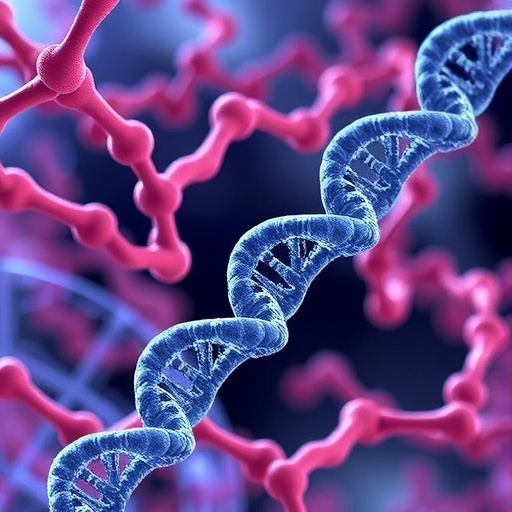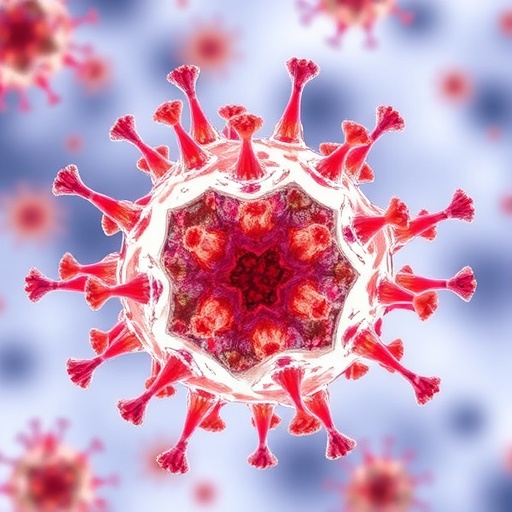In recent years, the study of RNA-binding proteins (RBPs) has rapidly evolved, revealing their pivotal roles in post-transcriptional gene regulation. These multifaceted proteins are instrumental in a variety of cellular processes, including RNA modification, splicing, polyadenylation, localization, translation, and decay. RBPs serve as dynamic regulators of gene expression, wielding significant influence over the fate of mRNA molecules within the cell. As our understanding deepens, it becomes increasingly evident that any dysregulation of RBPs can manifest as a diverse array of human diseases. Prominent among these are cancer, neurodegenerative disorders, metabolic abnormalities, and disturbances in tissue differentiation. The intricate networks of RBPs illuminate critical biological pathways, painting a complex picture of gene regulation and disease pathology.
Traditionally, researchers have focused on RBPs through the lens of their interactions with RNA, proteins, and post-translational modifications. However, emerging evidence suggests that the landscape of RBP function is profoundly influenced by small biomolecules (SBMs). These include sugars, nucleotides, and key metabolites like S-adenosylmethionine (SAM) and NAD(P)H. Furthermore, various pharmacological agents have also been found to bind RBPs directly, suggesting a multifaceted layer of regulation informed by cellular metabolism. These interactions are not merely incidental; they are context-dependent and concentration-dependent, highlighting an intricate relationship between RBPs and metabolic states of the cell. This burgeoning field is ripe for exploration, and the implications for human health are substantial.
A fascinating aspect of these SBM-RBP interactions lies in their ability to modulate RBP structure and localization. RBPs are not static entities; they undergo conformational changes that influence their binding affinity for RNA and other partners. These alterations can dictate whether an RNA molecule is translated, modified, or targeted for degradation. For instance, a specific sugar or metabolite might enhance the binding of an RBP to its RNA target, subsequently affecting the efficiency of protein synthesis. On the flip side, a different metabolite at varying concentrations could inhibit that interaction, leading to a dramatic change in the cellular response.
Recent studies have greatly advanced our understanding of how SBMs can shape the behavior of RBPs in a biological context. Researchers are employing innovative methodologies to identify RBP-SBM interactions with unprecedented precision. Techniques such as mass spectrometry, crosslinking experiments, and RNA immunoprecipitation are laying the groundwork for novel discoveries in this rapidly advancing field. By mapping these interactions, scientists can elucidate the molecular principles that govern RBP function and explore how deviations from normal interactions might lead to disease.
Moreover, the ability of SBMs to influence RBP dynamics offers exciting possibilities for therapeutic intervention. By targeting specific RBP-SBM interactions, it may be possible to rectify dysregulated pathways implicated in diseases like cancer and neurodegeneration. For example, designed small molecules can be utilized to restore normal RBP function or to inhibit aberrant interactions that lead to disease. This approach could open new avenues for treating conditions that currently lack effective therapies.
The intersection of cellular metabolism and RNA binding is garnering increasing attention in the scientific community. It underscores the idea that our understanding of gene regulation must expand to include a wider array of biochemical players beyond the traditional confines of nucleic acids and proteins. This paradigm shift reflects the complexity of cells as integrated units where metabolic states can have profound effects on gene expression. Understanding the nuances of these interactions is crucial for unlocking the secrets of cellular function and disease mechanisms.
Highlighting the relevance of these findings to human health, various research initiatives are now investigating the role of specific SBMs in modulating RBPs under diverse physiological and pathological conditions. By probing how metabolic changes—such as those occurring in diabetes or cancer—affect RBP function, researchers aim to draw connections between cellular metabolism and gene expression regulation. Such insights could revolutionize our understanding of disease mechanisms and lead to innovative therapeutic strategies tailored to the metabolic profiles of specific conditions.
In summary, the study of RNA-binding proteins has uncovered layers of complexity that intertwine gene regulation with cellular metabolism. As we delve deeper into the realm of small biomolecule-RBP interactions, we stand at the forefront of a scientific revolution with the potential for profound implications in both basic research and clinical applications. The exploration of how RBPs interact with small biomolecules not only enhances our knowledge of cellular physiology but may also translate into novel interventional strategies that harness these interactions for therapeutic benefit.
The future of RBP research promises new insights into the molecular workings of life, while also paving the way for therapies that can better target the fundamental processes underlying various diseases. As scientists continue to unravel the intricate dance between RBPs and SBMs, the tantalizing possibility of discovering new avenues for drug development and disease treatment draws ever closer to fruition.
By illuminating these complex molecular interactions, we are better equipped to tackle the challenges posed by human diseases. Through understanding the roles of RBPs in conjunction with small biomolecules, the scientific community is taking significant strides toward demystifying the underlying mechanisms of health and disease. Moreover, the integration of cutting-edge methodologies into this field is set to propel further discoveries, revealing layers of regulation that could redefine our understanding of gene expression and its implications for human health.
As the body of research continues to grow, the importance of bridging the gap between basic science and therapeutic application becomes increasingly clear. The relationship between RBPs and small biomolecules is not just a scientific curiosity—it represents a cornerstone of cellular biology with vast potential for impacting human health. By harnessing this knowledge, we could potentially transform the approaches we take toward treatment and prevention, ultimately enhancing the quality of life for many individuals affected by complex diseases.
In conclusion, the growing recognition of small biomolecules as influential players in the RBP landscape underscores the need for interdisciplinary research approaches that integrate biochemistry, molecular biology, and clinical insights. This evolving field holds tremendous promise for unlocking novel therapeutic avenues and advancing our understanding of the cellular machinery that dictates life. As researchers navigate this uncharted territory, they continue to reveal the remarkable ways that RBPs and SBMs interplay, offering tantalizing possibilities for science and medicine alike.
Subject of Research: RNA-binding proteins and their regulation by small biomolecules.
Article Title: Regulation of RNA-binding proteins by small biomolecules.
Article References:
Miao, W., Porter, D.F., Lopez-Pajares, V. et al. Regulation of RNA-binding proteins by small biomolecules.
Nat Rev Mol Cell Biol (2025). https://doi.org/10.1038/s41580-025-00914-4
Image Credits: AI Generated
DOI: 10.1038/s41580-025-00914-4
Keywords: RNA-binding proteins, small biomolecules, gene regulation, cellular metabolism, human diseases, therapeutic strategies.
Tags: cancer and neurodegenerative disorderscellular metabolism and RBPscontext-dependent RBP interactionsdynamic regulators of mRNA fategene regulation pathways and disease pathologymetabolic abnormalities in gene expressionpharmacological agents and RBPspost-transcriptional gene regulationRBPs in human diseasesRNA modification and splicingRNA-binding proteins regulationsmall biomolecules influence





